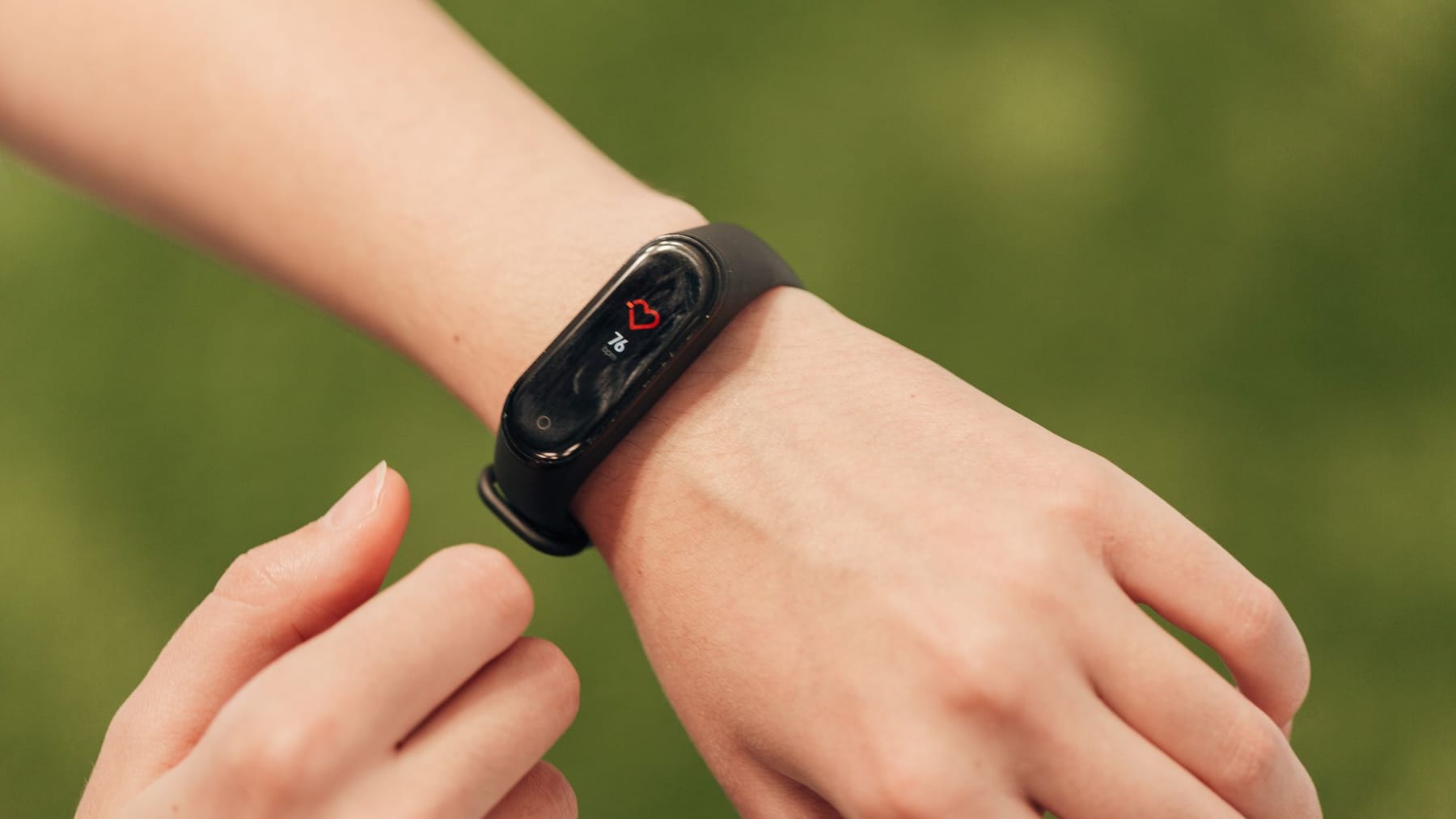
Trackers from Fitbit, Garmin & Co. at Stiftung Warentest
Fitness trackers are designed to keep an eye on your health: they measure your pulse, count your steps and analyze your sleep. But are these small sports watches reliable? Stiftung Warentest regularly tests the trackers to check this. We present the latest test results.
The most important things at a glance
Fitness trackers motivate you to exercise more and show your progress during training. The small wristbands are equipped with numerous sensors and can measure your pulse, calculate calories burned, count steps and analyze your sleep. More expensive sports watches also display messages from your smartphone like smartwatches.
In the “test” issue 06/2024, Stiftung Warentest shows the five currently best fitness trackers from their tests from December 2022 to today. What is striking is that only two models receive good overall grades, but there is a new test winner.
Fitness trackers tested: This is how Stiftung Warentest tests
Stiftung Warentest has now examined numerous fitness trackers, including wristbands from Fitbit, Garmin, Huawei and Xiaomi. In the latest test, only one model has been newly included in the ranking, but three trackers are also presented that have not yet made it into the “test” magazine.
The most important criteria in determining the overall rating are the fitness functions, communication and other functions, handling and the battery. The testers also pay attention to the stability and workmanship as well as the data protection of the fitness trackers for the wrist.
The results of the fitness tracker test at a glance
The test results remain sobering: Only two fitness trackers are now “good”, the new test winner from Fitbit (2,3) and a model of Garmin (2.4). Two trackers from Xiaomi follow with “satisfactory” ratings, including the newly tested Smart Band 8 Active (3.3). It is the cheapest fitness tracker in the test. The tested product from the Denver brand even failed completely due to inadequate fitness functions.
The test winner: Fitness tracker from Fitbit
The test result: With the “test” quality rating of “good (2.3)”, the Fitbit Charge 6 is the best fitness tracker. The new test winner was already examined in February of this year, but only now made it into the “test” magazine. The stability and workmanship are particularly positive. In addition, the fitness functions are “good” and the other functions are the best of all the models in the test.
Product details: The Fitbit tracker offers more than 40 training modes, GPS and helps with stress management. The Charge 6 also reminds you to exercise regularly. The bracelet also measures your heart rate and tracks your sleep. As with a smartwatch, you can also use various Google apps and use the sports watch to pay, play music or receive notifications. All you need is your smartphone within Bluetooth range.
With the paid premium program in the app, you have access to additional features such as the daily form index and video workouts. Six months of premium membership are included with the purchase.
The watch is waterproof up to 50 meters, so it can also be worn while swimming. Sweat doesn’t bother it either. You don’t need to charge the Fitbit tracker’s battery for up to seven days. The fitness tracker is compatible with Apple’s iOS and Android, so it can basically be paired with all common smartphones.
2nd place with the best fitness features: fitness tracker from Garmin
The test result: The Garmin tracker was already examined for the “test” issue 06/2023 and was the test winner with an overall grade of “good (2.4)”. That is now only enough for second place. While the model performs slightly worse than the Fitbit tracker in terms of other functions, it is actually better in terms of fitness functions.
Product details: The Vivosmart 5 from Garmin counts your steps, measures your heart rate and stress level, analyzes your sports activities and monitors your sleep. If your cell phone is connected to the tracker, the bracelet also informs you about incoming calls or messages. GPS functions can also be used with the help of the paired smartphone.
One of the highlights of the sports watch is the bright OLED touch display, which the manufacturer says is particularly easy to read. Integrated apps for sports activities such as yoga, running or cardio are available. Like the test winner, this fitness tracker is also waterproof up to 50 meters, so it can also be used when swimming.
The battery life of the Garmin sports watch is up to a week on one charge. It can be connected to both Android phones and iPhones via Bluetooth. This means that in the event of an emergency, notifications and location information are also sent to stored contacts.
The prize winner: fitness tracker from Xiaomi
The test result: This fitness tracker is the only one that has been re-tested for the “test” issue 06/2024. It is also the cheapest tracker in the ranking and achieves the grade “satisfactory (3.3)”. While it is clearly weaker in terms of fitness and other functions, it can keep up with the test winner from Fitbit in the other test points.
Product details: Despite its low price, Xiaomi also has a very versatile fitness tracker on the market with the Smart Band 8 Active: 50 training modes are available, including running, cycling and strength training. Like the other models, the tracker is also waterproof up to 50 meters and is therefore also suitable for swimming. In addition, the model counts steps, monitors sleep and measures pulse and heart rate.
On the TFT color display with touchscreen, you can choose between 100 watch faces and display your own pictures. If you connect the sports watch to your smartphone, you have access to calls, WhatsApp, etc. and can use the Mi Fitness app to analyze fitness and health data.
The fitness tracker’s battery is said to last up to two weeks on one charge and can be fully recharged in just two hours. The Xiaomi tracker is compatible with Android and iOS, i.e. most common smartphones.
Our conclusion on the fitness tracker test
The latest study by Stiftung Warentest also shows that only a few fitness trackers offer convincing fitness functions: There is often room for improvement when it comes to measuring the data. However, two models are now recommended: While for a long time the Garmin Vivosmart 5 was the only sports watch with a good test result, the Fitbit Charge 6 as the test winner. Both trackers only differ in nuances, so you can confidently choose your favorite.
If you want to use a fitness tracker to get more exercise, entry-level models are often sufficient. However, if you often go running and want to have accurate data, it is worth investing in a more expensive smartwatch with better sensors.
Things to know about fitness trackers
How do you find a good fitness tracker?
The test gives an initial indication of what you should look out for when buying a fitness tracker. The biggest differences are in the design: There are fitness trackers with and without a display. If there is no display, the straps are narrower. One advantage is that the battery lasts significantly longer. All recorded data is transferred to a smartphone app and displayed there.
If you want to see your values such as your heart rate during training, you need a fitness tracker with a display.
Expensive fitness trackers offer a wider range of functions. They automatically recognize training sessions and use GPS to record the running route and calculate the distance more accurately. These features are particularly useful if you go running often and want to see your progress.
What functions should a fitness tracker have?
Regardless of whether it has a display or not, the number of sensors and features is also important when choosing a fitness tracker. The following basic functions are useful.
- Pedometer: The trackers measure the steps you have taken and display them on the screen or in the app.
- Running distance measurement: The distance you run can be measured based on the number of steps you count. A built-in GPS sensor is helpful for precise analysis.
- Sleep monitoring: The bracelets use motion sensors to determine the wearer’s sleep phases. This makes it possible to optimize sleep.
- Calorie consumption: By entering additional data such as weight and height, the fitness bracelet can calculate your basal metabolic rate.
- Heart rate measurement: Keep an eye on your pulse while training and train in the ideal range for burning fat, for example.
- Bluetooth connection with the smartphone: The connection with the smartphone helps to evaluate the collected data. Most models also inform you when you receive a message on your cell phone.
Which smartphones are compatible?
Fitness trackers use Bluetooth to connect to the cell phone. All modern smartphones can therefore be connected to the trackers. The manufacturers’ apps are available for iOS and Android. Xiaomi also has an app in German for both systems.

Ethel Purdy – Medical Blogger & Pharmacist
Bridging the world of wellness and science, Ethel Purdy is a professional voice in healthcare with a passion for sharing knowledge. At 36, she stands at the confluence of medical expertise and the written word, holding a pharmacy degree acquired under the rigorous education systems of Germany and Estonia.
Her pursuit of medicine was fueled by a desire to understand the intricacies of human health and to contribute to the community’s understanding of it. Transitioning seamlessly into the realm of blogging, Ethel has found a platform to demystify complex medical concepts for the everyday reader.
Ethel’s commitment to the world of medicine extends beyond her professional life into a personal commitment to health and wellness. Her hobbies reflect this dedication, often involving research on the latest medical advances, participating in wellness communities, and exploring the vast and varied dimensions of health.
Join Ethel as she distills her pharmaceutical knowledge into accessible wisdom, fostering an environment where science meets lifestyle and everyone is invited to learn. Whether you’re looking for insights into the latest health trends or trustworthy medical advice, Ethel’s blog is your gateway to the nexus of healthcare and daily living.



